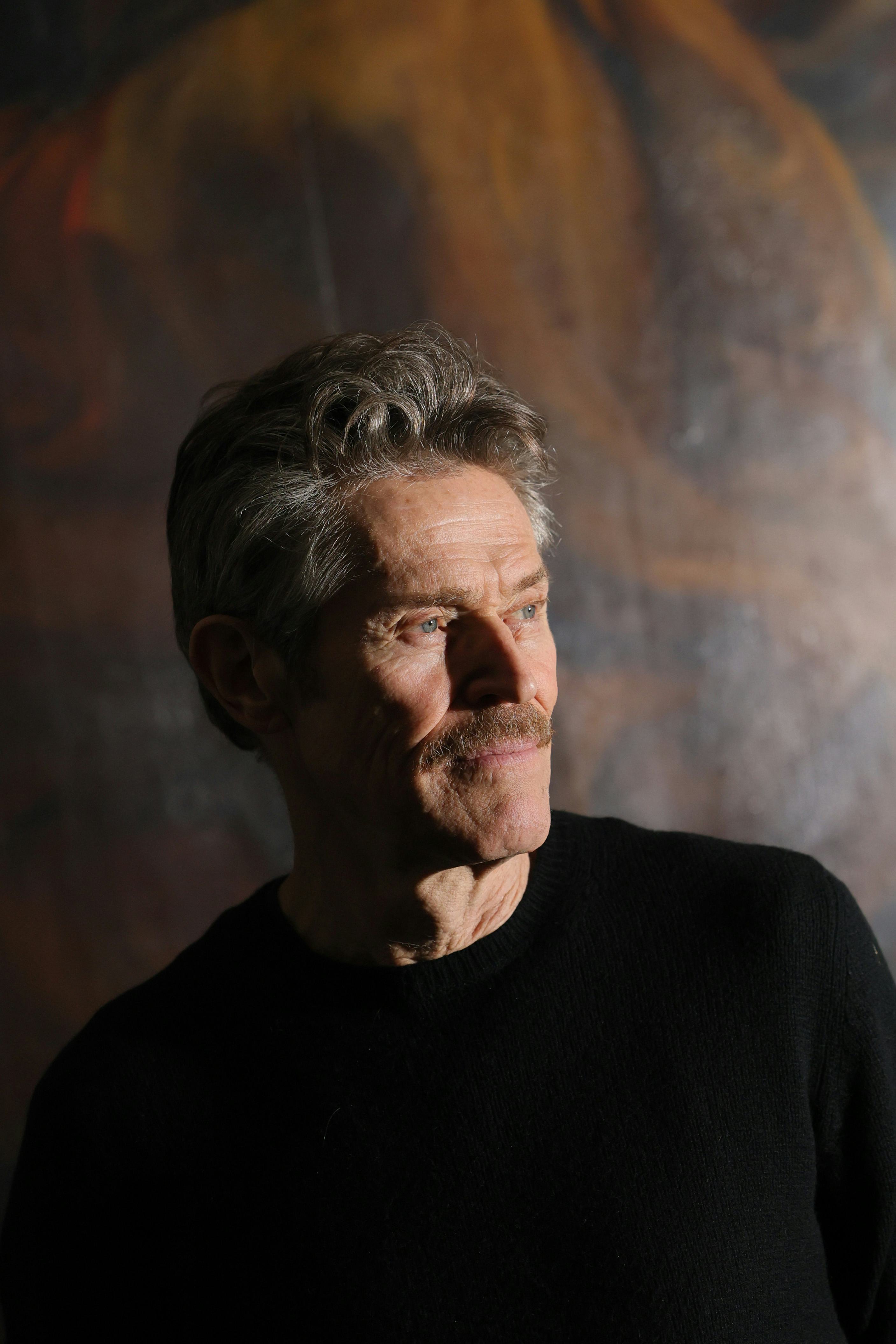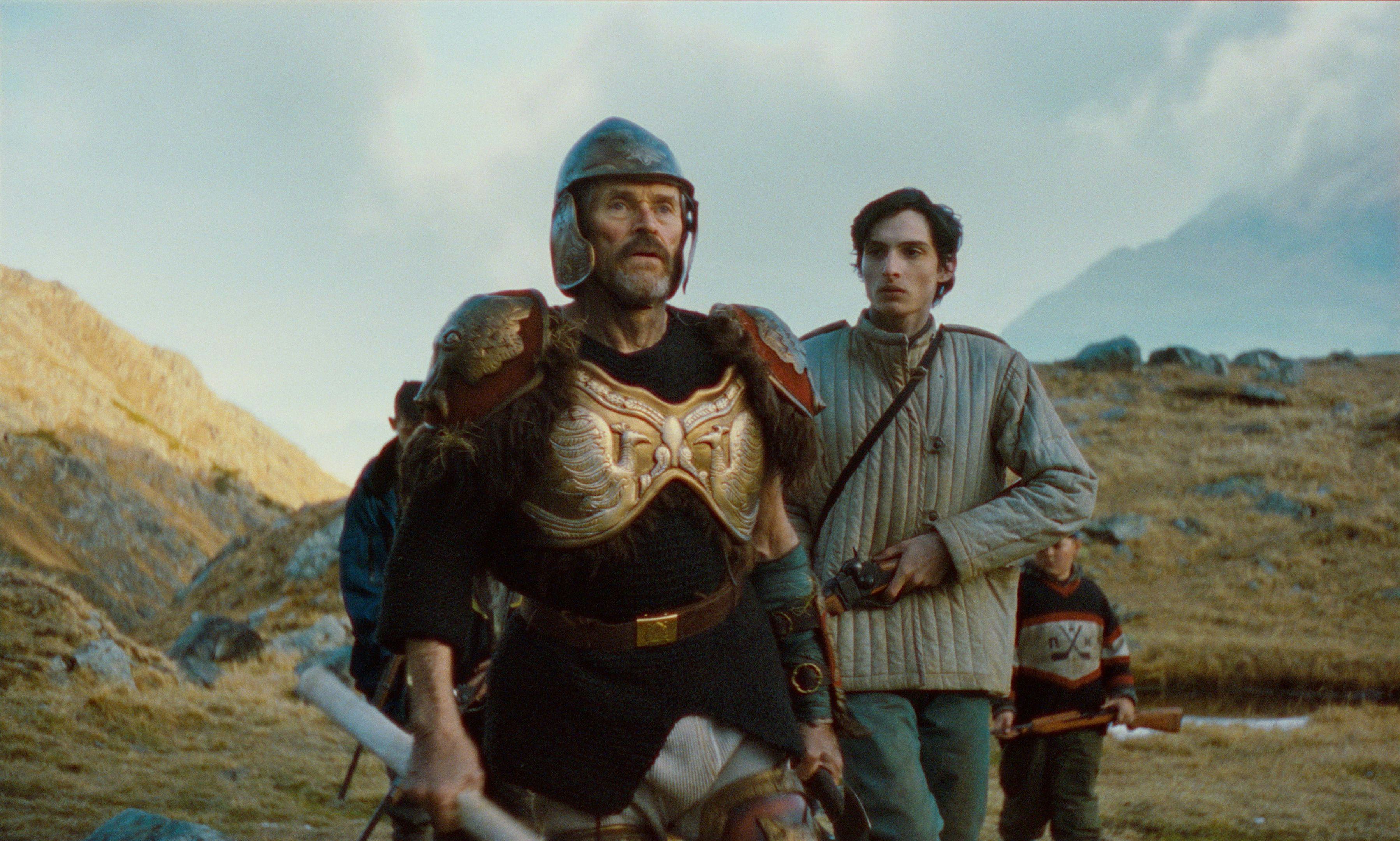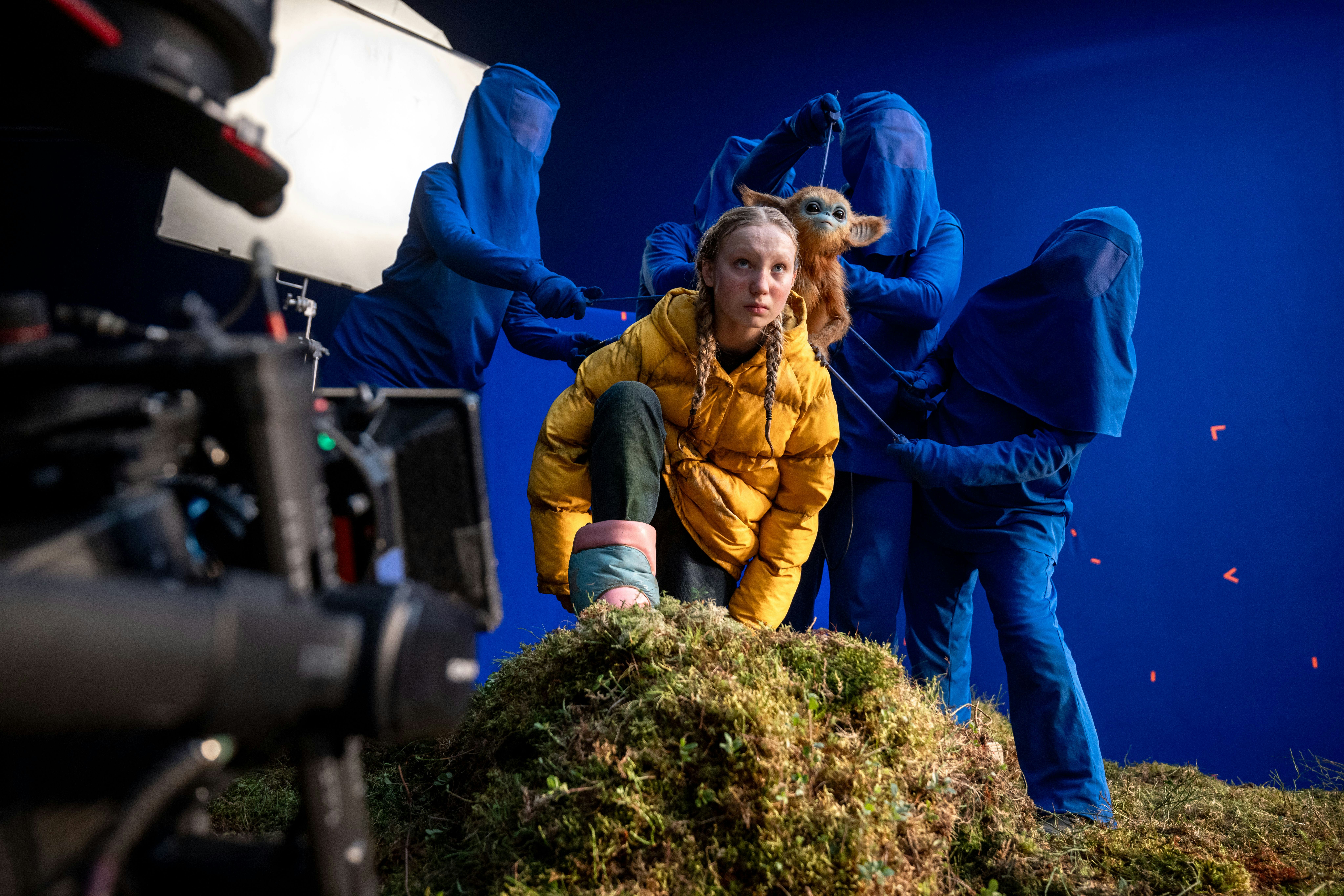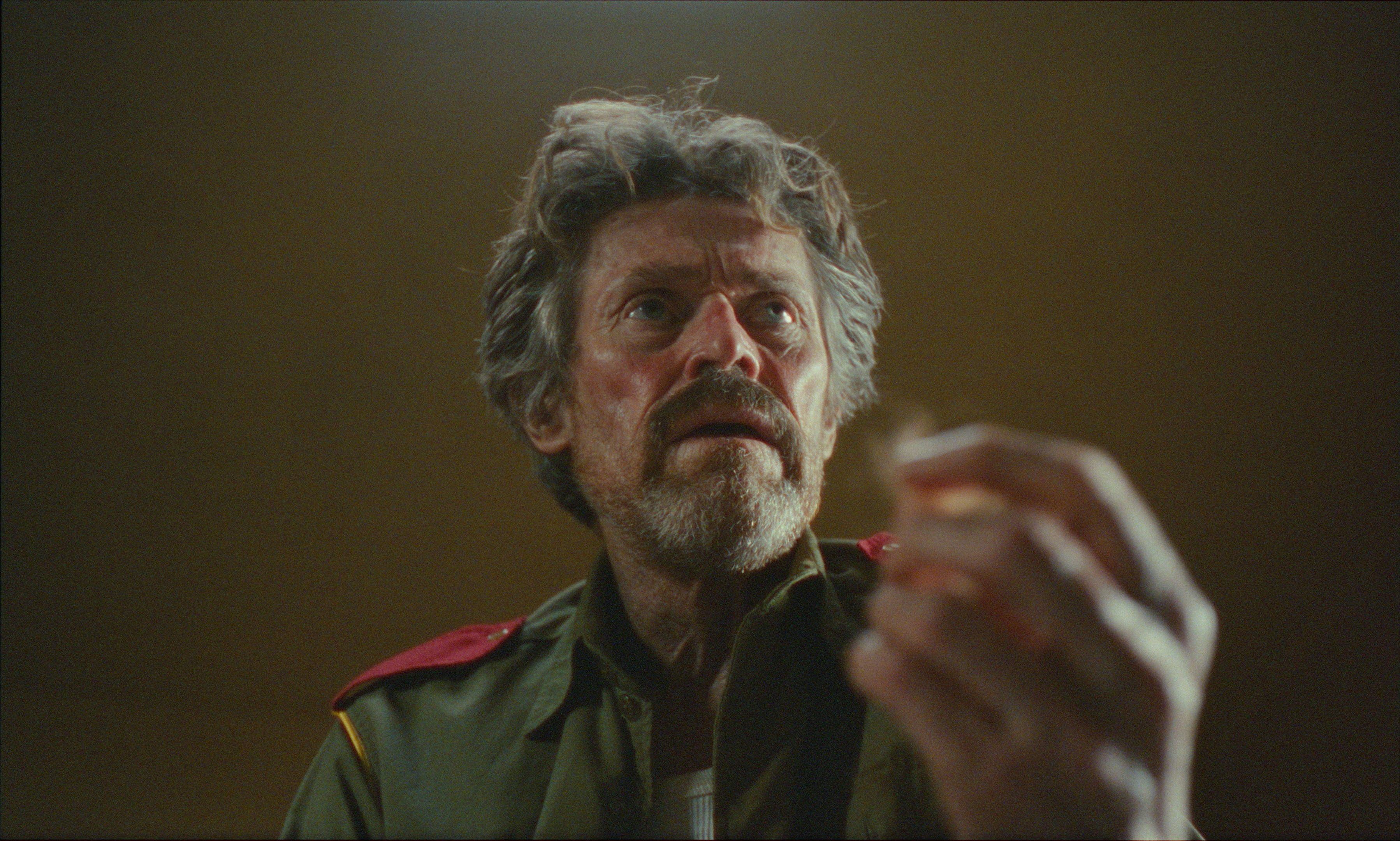
Willem Dafoe is a legend of the screen, the kind of actor you see pop up in anything and everything. He’s appeared in over one hundred films, each drastically different from the last — but even with so many projects under his belt, he’s still finding stories that surprise him.
The Legend of Ochi is one such surprise. Distributed by A24 and helmed by music video director Isaiah Saxon, the film is a Millennial update on the family-friendly creature films that dominated the ‘80s. Think E.T. the Extra-Terrestrial spliced with Planet of the Apes and rendered with visuals so dreamy, most assumed it’d been created with AI. In reality, Saxon spent years crafting the world of Ochi — and the eponymous, ape-like creatures in it — with a mixture of puppetry, CGI, and matte paintings. Even after its hands-on, “down and dirty” production in Romania, Dafoe still can’t believe a project of this caliber found him.
“I read it and I thought, ‘Whoa, they want me to do this?’” Dafoe tells Inverse. “It’s very different from anything I had done.”
“This could be a very distinct world.”
Ochi follows Yuri (Helena Zengel), a headstrong girl whose rag-tag community lives in fear of the wild ochi. When she encounters a wounded baby ochi, she commits to return it to his family — much to the chagrin of her father, Maxim (Dafoe).
“He’s got something in common with Klaus in Life Aquatic,” Dafoe explains, citing his role in Wes Anderson’s 2005 film. As with Maxim, there’s a “similar struggle between what they’re presenting to the world and who they are,” manifesting in a dysfunctional dynamic that gave Dafoe plenty to chew on. Ahead of Ochi’s limited release, the actor sat down with Inverse to unpack the complex family story at the heart of the film, and the pleasures of working with puppets.
This interview has been edited and condensed for clarity.

What were your first thoughts of the script, [director] Isaiah Saxon, and his vision when you first came across The Legend of Ochi?
It’s very different from anything I had done, at least lately — or even before that. And then I check out Isaiah, and I’m struck by the work that he does and the fact that he has this company that does these very artisanal, very hands-on, very low-tech effects. So I think, wow, this could be cool. This could be a very distinct world. It could match the story very well and create a world that we don’t normally see.
I’m curious what it was like on set. Were you interacting with puppets for the ochi?
I don’t have that many scenes [with the ochi], because I’m looking for the ochi — but when I finally find him, it’s a puppet. And that was interesting, because you’d think it would be difficult to perform with a puppet, but in fact, no. Because those six, seven people that are operating the puppet, all their energy is going into it, so the puppet has a kind of presence. And you’ve got the energy of all those people that you’re playing the scene with, so it’s much more engaging than you might think.
You have something to play against.
Absolutely, absolutely. But most of the stuff was very much informed also by the fact that we shot in Romania in very beautiful places, so that had a huge part of it. That added a lot to the performing and then how we told the story and just how we went about our day… The shoot was pretty down and dirty. We had a good crew, but we were shooting in [rough] weather and shooting in sometimes very natural places. I like that actually, because it really tells you what to do.

I’m sure the costume helps somewhat, too: at one point, your character is wearing this suit of armor.
It’s strange, but it was a nice detail. A good costume helps, that’s for sure. [That’s] something I learned very much doing The Lighthouse, for example. You can’t act cold — so when you’re cold, that’s taken care of. And you speak in a different way. You have different concerns. You think differently. When you’re hiking up a mountain with these little Romanian kids, you’re there. There are so many details and so many things that are outside of your experience that it’s an invite to hop into it and pretend and be there.
“That’s what I like about the movies. When... the world’s very complete, then you can entertain different thoughts, different feelings, and imagine a different world.”
That’s what I like about the movies. When they’re well-built and you’re given a good situation and a good setup and the world’s very complete, then you can entertain different thoughts, different feelings, and imagine a different world. And it really gets you into that important sense of wonder where you can challenge your thinking, you can challenge your sense of how things are. And if that can happen to the performer, then hopefully that can also be transmitted to the audience.
You definitely get the sense of play when you’re watching the film. Even when things get kind of serious. You do have a brief fight scene with Emily Watson...
She kicked my ass. I’ve got pictures because we shot very many takes on that, and I’ve got pictures of my bruised body... She was a good partner. We were out in the middle of nowhere, so we had some nice nature walks and that sort of thing. Even though she’s my ex in the movie, she was a good scene partner.

Your character Maxim goes on these long drives in his search for the ochi, and he listens to some unconventional stuff — even, at one point, Old Testament scripture. I’m curious if that revealed anything to you about the character.
You’ll have to go to Isaiah for that one… He’s a very sensitive guy, and he talks about how sometimes Maxim doesn’t express himself well in language… He’s sort of a blowhard, and you feel for him because he’s like a crazy scout master… He’s got something in common with Klaus in Life Aquatic, this similar struggle between what they’re presenting to the world and who they are. [So] he expresses himself through music, through movement. Those little details and little snippets of song — and the fact that he wanted to shoot in Romania — those are all textures that really are [Isaiah’s] language. So I just get behind that and, of course, it does suit the character, because it gives a real sense of place and specificity.







